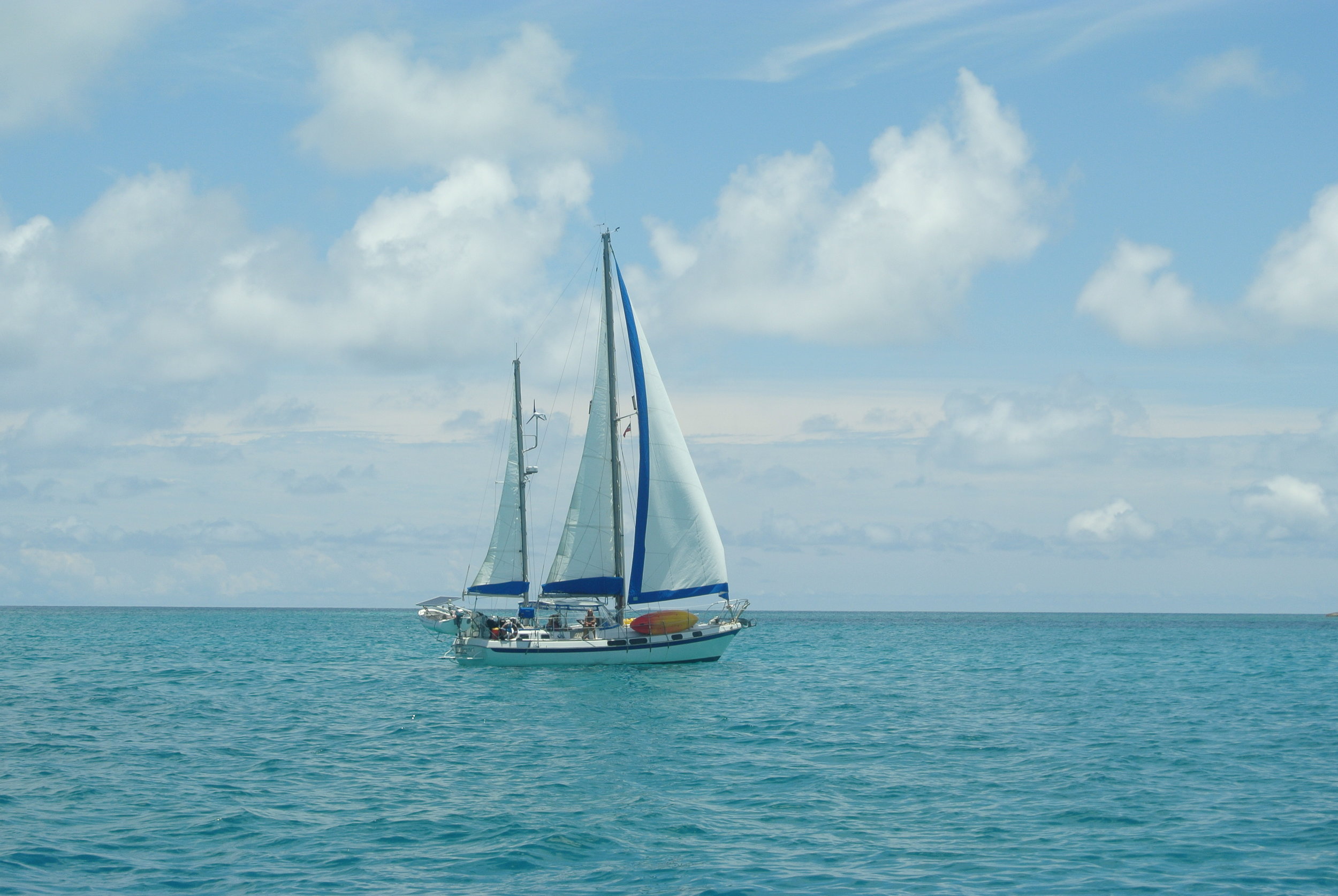Tanbark sails is probably one of the most identifiable features we have from a far.
When we are sailing along, we know when someone is trying to hail us because they will call out "Sailboat with red sails" and right then we know that they mean us. This cuts down on confusion and wondering who they are trying to get a hold of. Instead, we know they want to talk to us and this speeds up the informational exchange that needs to occur.
Another really beneficial aspect of tanbark sails has to deal with inclement weather. White sails fade away into fog and rain, while tanbark sticks out like a dark smudge in the distance.
Lastly, when cruising, you will meet the same people over and over again. Having tanbark sails means that they can spot us from far away and then come join us where we are. We have had numerous boats see our sails and radio us to invite us into the anchorage, as well as see us in an anchorage and come over to hang out (before the sails get covered).
While mostly all boats in the distance have white sails, the few with tanbark sails stand out and makes you easy to see and easy to identify.







